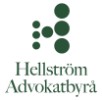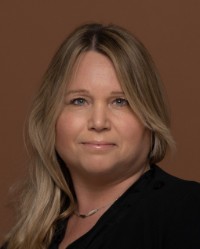Energy & Infrastructure M&A 2025
Sweden
Trends and Developments
Executive Summary
Sweden’s energy and infrastructure M&A market is entering a new cycle. Electrification of heavy industry, data centre build-out, and transport decarbonisation are driving grid investment needs. At the same time, policy changes, notably the new FDI screening regime, military-related stop to offshore wind farms and reopening for new nuclear, are reshaping risk allocation and valuations.
Ongoing M&A trends such as consolidation in service and construction industries related to electrification and grid build-out and small and mid-sized hydropower plants and companies are expected to continue; M&A and joint-venture building in nuclear is also an expected trend.
Funds and companies active in offshore and onshore wind, solar and battery energy storage systems have remained in a “waiting mode” but an uptick in investments and M&A activity is expected in 2026.
Maintenance investments in rail, water and sewer systems, and certain security-related infrastructure projects are also expected to drive M&A activities and consolidation in adjacent industries for services and specialised construction.
Market and Political Landscape
Macroeconomic backdrop and power balance
Sweden combines comparatively strong public finances and a deep institutional investor base with one of Europe’s cleanest power mixes (eg, hydro, nuclear and wind). Power demand is set to grow materially through 2035–45 (electrification of steel, chemicals, transport, and the rise of AI/data centres). Developers and acquirers are struggling in contending with imbalances and capacity constraints in the southern price areas and a grid connection queue that influences project timelines and pricing.
Wind generation has grown rapidly and has, on windy months, rivalled or exceeded monthly output from nuclear and hydro. The government’s energy policy now targets a “fossil free” system, explicitly including nuclear, with a long-term ambition to double electricity output over the next two decades. Bottlenecks in grid build-out and permitting still drive variances across Nord Pool price areas.
Policy Matters Relevant to M&A
FDI screening
Since 1 December 2023, Sweden operates a comprehensive screening regime for foreign direct investments in “protection worthy” activities (energy, transmission, certain digital infrastructure, water, transport and other critical functions). Notifications are broadly framed and can capture minority deals, internal reorganisations and asset deals. For energy and infrastructure transactions, this is now affecting time but also the investor landscape, notably Chinese investors.
Nuclear reopening
A comprehensive support package including government loans and two-way Contracts for Difference (CfD) has been introduced. Proposed legislative changes are seeking to remove the historic location cap and enable newbuild reactors at additional coastal sites, including potential small modular reactors (SMRs). While new nuclear remains policy-led and grid anchored, there have been significant activities and international interest in upstream consortium building, site control strategies and early-stage platform investments.
Offshore wind reforms
After a stop on the majority of offshore wind projects due to security concerns, Sweden is now reshaping how sites are allocated and connect to the main grid. Activity in the sector will remain in waiting mode until the change from an open-door policy to a system where locations are auctioned out is established.
Hydropower modernisation
The 20-year programme to align hydropower with modern environmental conditions (and the hydropower environmental fund) continues to drive capex cycles, carve-outs, portfolio optimisation and continuous small-scale M&A.
Onshore Wind
Market character
Onshore wind is still Sweden’s most liquid renewables M&A subsector. Deal flow is a mix of:
- platform and portfolio exits by international developers recycling capital;
- repower/repurpose plays where 10–15-year fleets contemplate life extension, larger rotors or partial hybridisation with batteries;
- local political veto on greenfield projects late in the permitting process still adding political uncertainty and a limitation on investments; and
- late-stage processes where grid and permit certainty price at a premium.
Typical structures
Share deals dominate for operating parks; asset deals for construction portfolios. Earn-outs are used where grid delivery or turbine upgrades are uncertain. For minority and co-investment structures, governance centres on capex approvals, PPA strategy and refinancing triggers.
Diligence issues
Issues include: permitting conditions (noise, shadow flicker, species protection, reindeer herding); land lease perpetuity and indexation; wake/terrain effects from neighbouring build-outs; and warranty coverage. The need for local government approval constitutes a significant political risk in greenfield investments.
Offshore Wind
Market character
Sweden’s offshore wind pipeline is sizeable but clustered in overlapping Baltic and North Sea zones. Governmental decision to halt almost all offshore development projects due to military security concerns has largely affected the sector, which remains on hold, waiting for expected policy changes.
Commercial themes
These include the following.
- Site allocation and seabed overlap – Reforms moving away from an open-door system to a system where the state advertises completes areas and conducts an auction. Legacy overlaps are or will be rationalised via swaps and area rationalisation agreements.
- Grid connection and island hubs – Clarifying who builds and pays for offshore connections is pivotal.
Typical structures
Typical structures include: early-stage stake sales with milestone call/put mechanics; shareholder loans for development costs; and change in law sharing.
Diligence issues
Issues include: maritime spatial plans; defence and radar constraints; Natura 2000 and shipping lanes; fishing and harbour interactions; and coexistence with offshore hydrogen pilots. Careful alignment with Svenska kraftnät’s connection studies and auction sequencing is essential.
Nuclear
Market character
A comprehensive support package including government loans and two-way Contracts for Difference (CfD) has been introduced. With the legal pathway reopened for new nuclear at additional coastal sites, and the government signalling openness to SMRs, new nuclear has entered strategic energy planning. While full-scale project finance for SMRs is unlikely near term, corporate and consortium M&A at the development platform level has been observed: site acquisitions, land/control options, and IP/technology partnerships.
Commercial themes
The following themes arise in the nuclear sector.
- Policy-linked risk sharing – Investors structure step-in/step-out rights around regulatory milestones (site designation, safety case acceptance, grid integration commitments) and public support frameworks.
- Supply chain and localisation – Diligence covers long lead components, nuclear fuel strategy, and localisation rights and obligations.
- Interface with the grid – Newbuild must dovetail with transmission reinforcements and demand clusters (eg, south of Sweden deficits).
Typical structures
Structures include: consortium joint ventures with phased equit; vendor development cost recovery; and government-linked undertakings participation. Government-linked undertakings could participate at equity level in certain greenfield projects.
For targets holding brownfield nuclear adjacent sites, transactions include: complex land and water rights packages; coastal zoning; and environmental baseline studies.
Diligence issues
Issues include: land and water rights; licensing pathway(s) and regulator interactions; decommissioning and waste obligations; and vendor technology maturity.
Hydropower
Market character
Hydro remains Sweden’s backbone and a core holding for incumbents, but portfolio optimisation and environmental modernisation capex create opportunities at the margin, particularly for small/medium plants and concessions linked to industrial sites. The uncertainty of the funding (environmental fund on pause) for review processes is a driver for owners of small-scale hydropower plants to sell before clarification on the process forward is presented.
Commercial themes
These include the following.
- Modern environmental conditions – The national plan requires upgrades (eg, fish passages, minimum flows) that can reduce production or increase capex.
- Flexibility value – Hydro’s balancing and ancillary value is rising with wind penetration.
Typical structures
Structures include: carve-outs of small hydro portfolios from industrial owners; and joint ventures for basin level optimisation. Contractual water law diligence often dictates structure.
Diligence hotspots
These include: water rights; concession renewal; fishery and biodiversity obligations; sediment management; dam safety standards; and cybersecurity.
Solar
Market character
After a record year in 2023, a more moderate growth was seen in 2024 and 2025, and grid access became the binding constraint in some areas. M&A activity spans rooftop portfolios and utility-scale greenfield in regions with grid headroom. Co-location with battery storage is increasingly standard in newbuild.
Commercial themes
The following themes arise in this area.
- Tariffs and taxes – Sweden’s framework remains supportive, though buyers must diligence energy tax and billing arrangements.
- Grid and land – Grid letters and interconnection deposits are value drivers; for rooftops, roof condition, structural load, fire safety and landlord consent packages are central.
Typical structures
Structures include: share deals in SPVs for operating (corporate) rooftops; asset deals/forward sale structures for greenfield; build own transfer (BOT) for municipalities.
Diligence hotspots
These include: module provenance and traceability; warranty tails; fire safety; snow load engineering; and roof lease bankability.
Energy Storage
Market character
Battery storage has moved from pilot to scaling asset class in Sweden. M&A is most active in late-stage development portfolios and operating assets.
There are pilot projects underway to use water in old mines as energy storage by converting them into pumped-storage hydroelectric systems.
Commercial themes
Co-located wind/solar + battery energy storage systems (BESS) enables grid-friendly profiles and local congestion relief. Contracts allocate grid capacity, curtailment, and shared services.
Typical structures
The typical structures are project financeable SPVs with revenue share.
Diligence hotspots
These include: ancillary market prequalification; cybersecurity; safety certification; and warranty back-to-backs through the EPC chain.
Other Infrastructure: Roads and Rail
Market character
Transport infrastructure remains predominantly public sector led via the National Transport Plan. Private M&A focuses on contracting groups, maintenance providers and logistics hubs rather than road or rail concessions per se. That said, the rail investment pipeline (eg, Norrbotniabanan, Ostlänken and capacity expansions around metropolitan nodes) creates adjacent opportunities. In roads, decarbonisation drives acquisitions in EV charging networks, smart traffic and ITS, and asphalt recycling platforms.
Commercial themes
The following themes are encountered.
- Procurement and risk pass through – For M&A, diligence focuses on project orderbooks, indexation mechanisms for materials, and exposure to fixed-price legacy contracts and risks related to public procured contracts and invoicing procedures.
- Signalling upgrades and digital control drive consolidation among niche suppliers; cybersecurity credentials and safety certification are central value drivers.
- Logistics real assets – Intermodal terminals and last mile hubs attract capital, often via corporate acquisitions of operators holding long ground leases with municipalities.
Typical structures
Structures include: share deals in asset light service providers; carve-outs from large contractors; and minority growth investments in charging networks.
Diligence hotspots
Recent public scandals and court cases have focused on contractors allegedly invoicing public entities in excess of contract, giving rise to public entities conducting investigations. Diligence hotspots include: public law risks (procurement, state aid); indexation and change in law protections; invoicing and contractual obligations; labour and collective agreements; safety certifications; and environmental liabilities (contaminated rail yards, asphalt plants).
Trends for 2025–27
The following trends are anticipated.
- Onshore wind will remain important, in particularly portfolio optimisation, and a resurge in investments is expected from 2026.
- Actors in solar are expecting an uptick in investments after a slowdown of activity in 2024 and 2025.
- Offshore wind will remain in waiting mode until more political clarity on the viability of greenfield investments is achieved. Once the planned auctioning process is established, this will drive transactions such as swaps and consolidation.
- Nuclear will move from policy to site-specific development, with early-stage corporate M&A among platform developers and suppliers.
- Hydropower transactions will continue to consolidate small-scale hydropower plants and certain larger non-core assets divestments.
- Transport will offer indirect M&A via services, digital systems and logistics real assets. Backlog of investments in water and sewage systems and public investments in security-related assets (such as shelters and certain transport routes) will drive investments in service and construction.
Sweden offers one of Europe’s most attractive pipelines for long-term, inflation-linked infrastructure returns. This is in part backed by very solid public finances, which drive infrastructure projects in general and investments in new nuclear in particular.
Hellström Advokatbyrå KB
Kungsgatan 33
Box 7305
103 90 Stockholm
Sweden
+46 707 16 30 24
manne.bergnehr@hellstromlaw.com www.hellstromlaw.com



